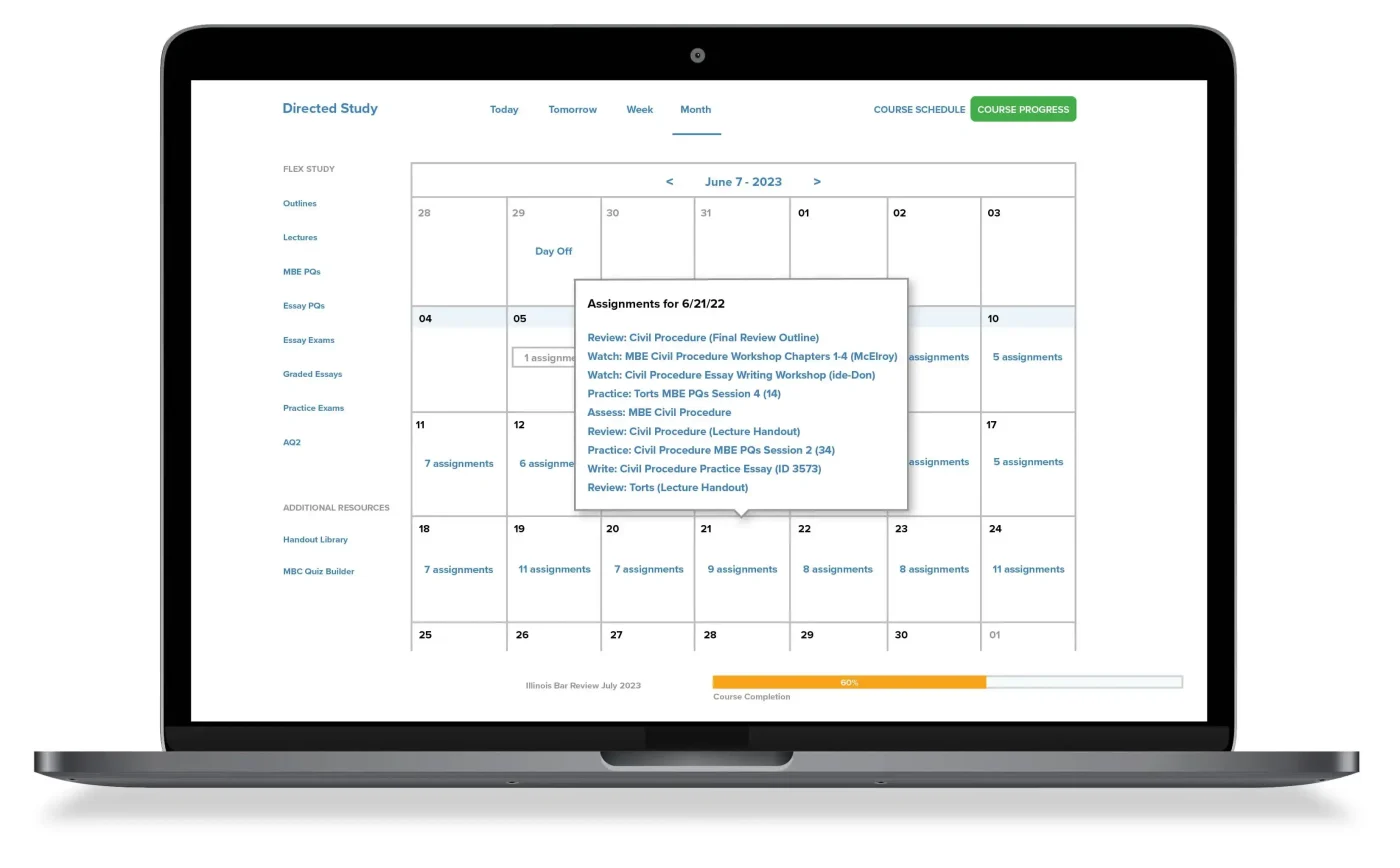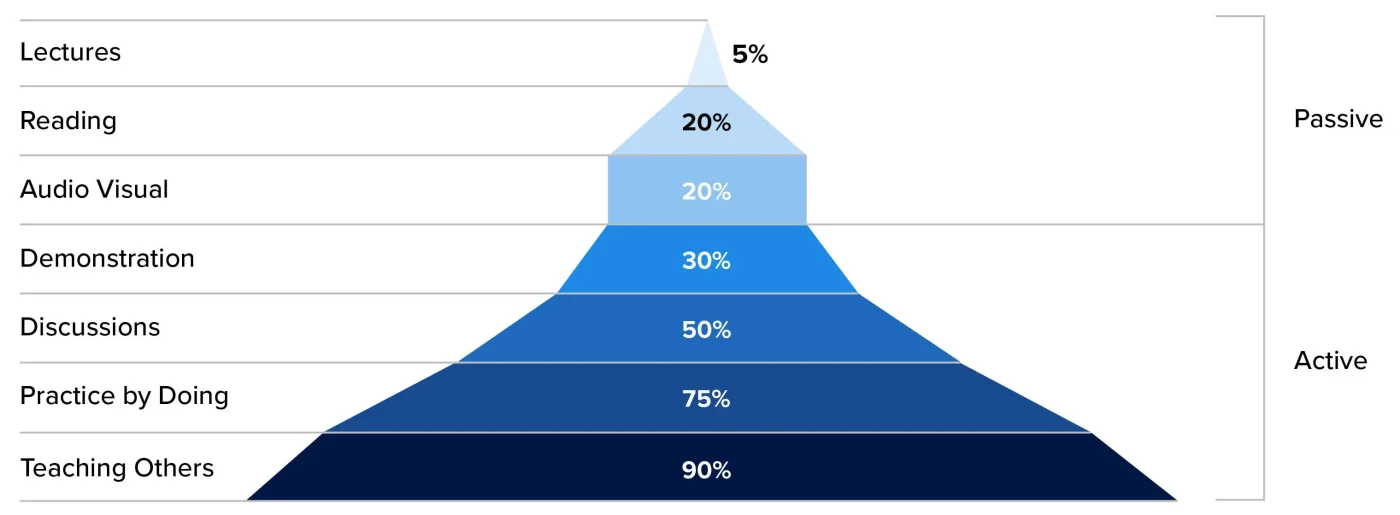MPT® Study Guide
Everything You Need to Improve the Score and Pass the Exam
Many first-time examinees assume they don't have to study seriously for the MPT because it carries less weight than other exam components, so they believe it's easy. This is a mistake. The MPT is highly technical and requires diligent preparation.
The following MPT study guide provides a blueprint that has helped many hopeful examinees meet or exceed their goals. We will discuss how to study for the MPT and cover the best study materials and aids available.
Understand the MPT Format and Skills Tested
The Multistate Performance Test (MPT®) is administered by the National Conference of Bar Examiners (NCBE®) to test the examinee's fundamental lawyering skills by simulating common tasks that new lawyers will confront. The exam constitutes 20% of the total weight of the Uniform Bar Exam (UBE®), but weight may vary for non-UBE jurisdictions. Non-UBE jurisdictions typically assign the MPT a weight of about 10%.
The MPT consists of two tasks set in a fictitious closed universe—the state of Franklin. The rules of law that you've been studying do not apply in Franklin. Instead, you're provided a "library" of laws, a "file" full of facts, and an assignment from a fictional "boss," which you'll have 90 minutes to complete. While Franklin and its laws are imaginary, the tasks replicate realistic assignments that newly minted lawyers will have to complete.
The MPT is designed to test an examinee's ability to:
- Sort detailed factual materials and separate relevant from irrelevant facts
- Analyze statutory, case, and administrative materials for applicable principles of law
- Apply the relevant law to the relevant facts in a manner likely to resolve a client's problem
- Identify and resolve ethical dilemmas when present
- Communicate effectively in writing
- Complete a lawyering task within time constraints
Learn common question types and essay writing skills with Themis’s Performance Test Workshop.

How to Study and Prepare for the MPT
The MPT tests your ability to think critically and follow directions while completing an assignment under time constraints. Preparation, then, must stress practice rather than rote memorization. The difference between examinees who pass the MPT, and those who fail, is the efficacy of their study strategy and the quality of the resources they use.
The sections below provide actionable advice and industry-leading tools. If you use both, you will almost certainly be among those who not only pass, but whose MPT score eclipses that of their peers.
Understand the task format
You won't know which type of task you'll be assigned until you're sitting for the MPT. However, each task follows the same format (see table below). You'll notice that the facts and laws you're provided may not be relevant to the case. Some information may be ambiguous or even conflicting. This feature of the MPT is designed to simulate issues you'll face in the real world and test your ability to discern and analyze.
You must thoroughly review everything in the library, regardless of how much you've practiced, because Franklin's fictional laws routinely change from one exam to the next.
| MPT Task Format | |
|---|---|
| The File |
Task Memo: A memorandum from your "supervising attorney," usually in the form of an email, letter, etc. This document will tell you:
Factual Documents: These may be relevant or irrelevant to the case and include transcripts of:
|
| The Library |
The Laws: These may be relevant or irrelevant to the case and include:
|
Expose yourself to as many tasks as possible
According to the NCBE, examinees may be instructed to complete any of the following tasks:
- Memorandum to a supervising attorney
- Letter to a client
- Persuasive memorandum or brief
- Statement of facts
- Contract provision
- Will
- Counseling plan
- Proposal for settlement of agreement
- Discovery plan
- Witness examination plan
- Closing argument
Each of these tasks fits within one of four types (see chart below). For example, a letter to a client would fit under "opinion letter". However, in rare cases, you may be tested on an unusual or "wildcard" task.
For example, examinees were tasked with a bench memo only twice, once in July 2012 and again in February 2017. Don't panic if you come across a wildcard task. Just follow the directions very closely.
| MPT Task Type Breakdown | |||||
|---|---|---|---|---|---|
| Task | Audience | Tone | Strong Heading Conclusions | Goal | Frequency |
| Objective Memo | Managing Partner | Objective | No | Resolve a legal issue | Very High |
| Persuasive Brief | Judge | Persuasive | Yes | Persuade | High |
| Opinion Letter | Client | Objective | No | Provide legal advice | Low |
| Demand Letter | Opposing Counsel | Persuasive | No | Persuade to take action | Low |
The "Audience” section below indicates the most common value. Every task type could have an audience that is a different type of lawyer except for opinion letters, which are typically written for clients. Remember that the laws provided in each task are not related to the real world. You can't rely on memorization. Instead, you must study through exposure by practicing as many MPT tasks as possible.
The Themis + UWorld Bar Review Bundle includes MPT questions from 22 previously administered bar exams. Working through these will provide you with a massive advantage. You'll also gain access to our workshop, which highlights commonly tested bar exam questions and tools for improving organizational and writing skills.
Make a study schedule/plan
Passing the MPT may seem like an unattainable goal when viewed as a singular, one-step goal. It's important to remember that success is best achieved by accomplishing a progression of manageable and realizable mini-goals.
You'll gain access to our adaptive study calendar when you sign up for the Themis + UWorld Full Bar Review Bundle. Whether you go with our recommended start date or choose your own, the calendar will adjust your study schedule accordingly, so don't waste time calculating how much catching up you have to do or worrying about tracking down what you’ve missed. Simply set your date and start studying.
How Long Should you Study for the MPT?
The amount of time you need to study for the MPT depends largely on whether you are studying full-time, or with a full-time or part-time job, and your academic background.
Studying full-time
For students studying full-time, we recommend a study period of 8-10 weeks (2-3 months). This timeline equates to approximately 40-50 hours a week preparing for the bar exam.
You can practice 2-3 MPT questions a week while making sure to review the subjects you've already studied from other bar exam components as you get closer to the exam.
Studying with a full-time job
Not everyone is fortunate enough to have 40-50 hours a week to dedicate to bar exam preparation. For those with a full-time job, a family, or other responsibilities, we recommended a study period of 4-6 months (about 16-25 hours per week). You can practice 1-2 MPT questions each week and still have plenty of time to study for other components of the bar exam.
Make exam day feel like practice with our simulated MPT experience.

MPT Preparation Tips to Improve your Score
Examinees tend to keep the MPT in the back of their minds because there are no laws to memorize. However, a superior MPT score requires superior preparation. Aside from practicing with past exam questions, follow the tips below to improve your score.
Learn how to format the MPT
There is a lot of similarity between each MPT task type in terms of formatting, but important distinctions exist. Following instructions is critical. You need to give your reader exactly what they're asking for.
Often, the task memo will give you very clear guidelines for what you should write. Use these to create your outline and format your response. If you don't feel that the assignment gives you clear guidelines, do your best to create a structure that reflects the goal of the assignment. See the dropdown menu below for details.
Caption: Include the matter at hand, names of sender and receiver, and the date.
Introduction
Discussion: One for each issue. Include a heading followed by rule, analysis, and conclusion.
Conclusion: Summarize content
Statement of the case: Include parties involved, the nature, issue in dispute, and stage of the case.
Statement of the facts
Legal argument: One for each argument. Use strong conclusions with complete sentences for headings, followed by rule, analysis, and conclusion.
Conclusion: Summarize content
Caption: Include parties involved, the nature, issue in dispute and stage of the case.
Introductory Paragraph: Summarize the content’s purpose and who the sender is.
Body of the Letter: Follow IRAC. Explain the legal issues at hand.
Conclusion: Sign off according to the task’s instructions.
Caption: Include parties involved, the nature, issue in dispute, and stage of the case.
Introductory Paragraph: Summarize the content’s purpose and who the sender is.
Body of the Letter: Follow IRAC. Explain the legal issues at hand.
Conclusion: Make your demand clear and narrow. Sign off according to the task’s instructions.
Pay attention to document details
As you read through the documents of your case file and library, pay attention to detail, and ask yourself whether what you're reading is a memo, a brief, or something else. What's considered an important detail depends on the goal of the assignment, so always read with the end product in mind.
Replicate MPT conditions with time constraints
You will have 90 minutes to complete each MPT task. Keep this in mind as you work through your practice tasks. Your answers may be excellent without a deadline looming, but on the actual exam, you won't have that luxury. Imitating MPT time constraints will give you confidence and help you delegate your time more wisely.
Use the proper language and tone for the assignment
Always keep your audience in mind and calibrate your style and language accordingly. Are you writing to a partner in a law firm? A client? Each requires a different presentation of the information.
Use IRAC for legal analysis or argument
The IRAC method clarifies your answer to the reader and ensures that you don't omit important information. IRAC is structured as follows:
- Issue
- Rule
- Analysis
- Conclusion
Always Include legal citations
Citing supporting cases is essential because the library provides all applicable case law is provided to you.
UWorld Study Methodology Can Help You Raise Your MPT Score?
Active learning is a research-backed pedagogical method based on the fact that when multiple neural pathways are activated simultaneously, they make new connections more efficiently. In other words, the more stimulating the activity, the more efficient the learning process becomes.
It would be ridiculous to suggest learning soccer from a lecture or a book only, but why, then, do we take this approach to test-taking? Here's UWorld's answer to that question—you shouldn't, and you don't have to.
With the Themis + UWorld Bar Review Bundle you can practice by doing. Our products are designed with an active learning approach, and our resources go beyond 22 MPT questions from previously administered bar exams. You'll also gain access to:
- 100+ Multistate Essay Exam (MEE) questions from past bar exams with unlimited essay grading
- Thousands of Multistate Bar Exam (MBE®) questions with which you can create unlimited practice exams
- Skills workshops and tools for improving organizational and writing skills
- An integrated digital platform accessible from all your devices so you can study anytime, and from anywhere
These features are just the tip of the iceberg.
Exclusive access to dozens of practice questions from recent bar exams.

Frequently Asked Questions
How much time do I have to answer each MPT question?
You will have 90 minutes to complete each MPT task if you are taking the UBE. Some-state specific exams have different time constraints, so make sure to check with your state’s board of bar examiners.
Can you fail MPT and still pass the bar exam?
You cannot “fail” the MPT and still pass the bar exam, but a relatively low score can be balanced out by scoring higher on the MEE and MBE components (if you’re taking the UBE).
References
Read more about the bar exam
The Multistate Bar Exam is a six-hour, 200-question multiple-choice exam and has a weight of 50%. Make sure to check out our study guide and start preparing.
The Multistate Essay Exam (MPT) consists of six essay questions and typically has a weight of 30%. Check out our comprehensive MPT study guide.
Learn everything you need to know about the Multistate Professional Responsibility Examination (MPRE), which is administered three times a year.
The bar exam is the gateway to bar admission and becoming a legal professional. Be prepared for the exam. Start with our study guide.

